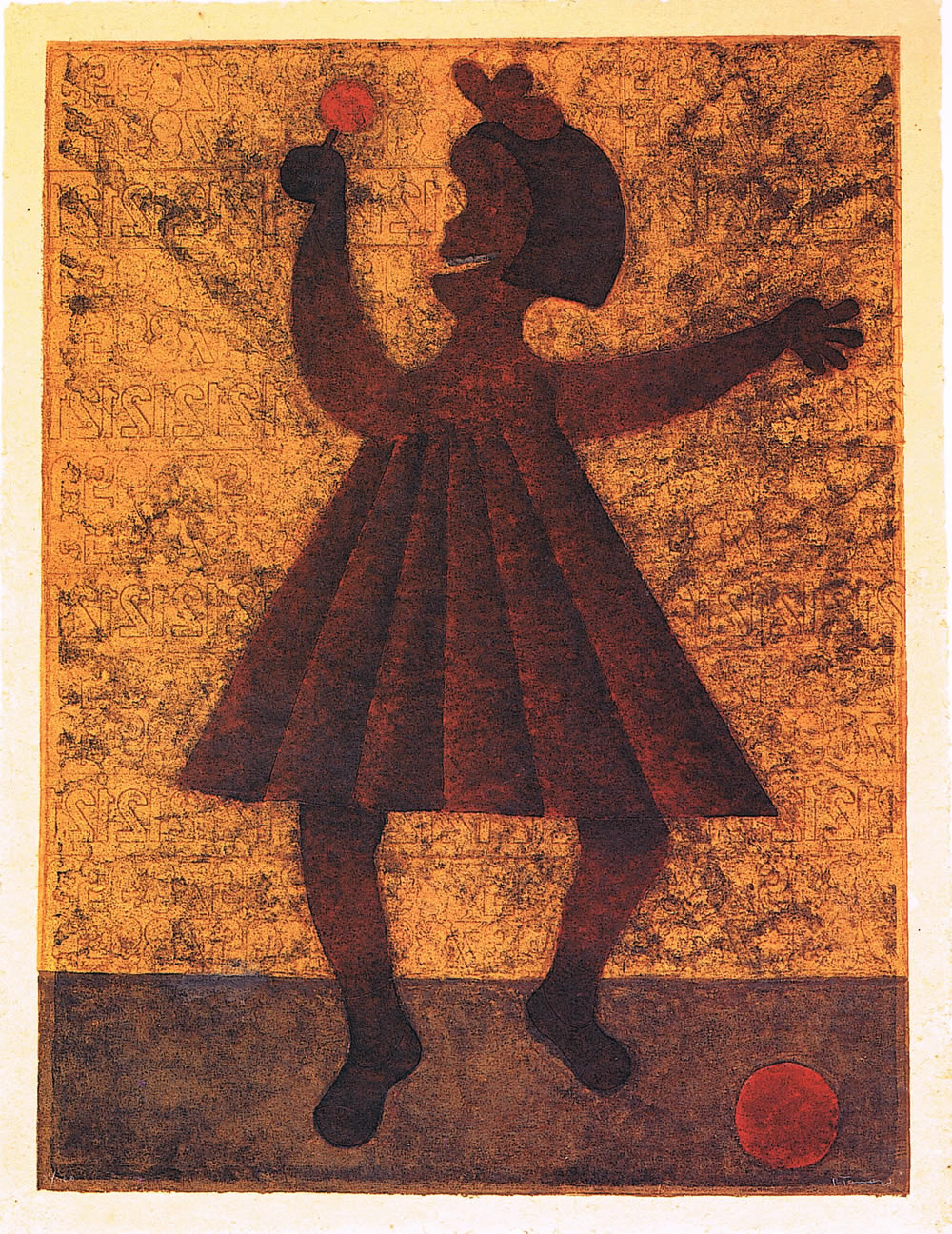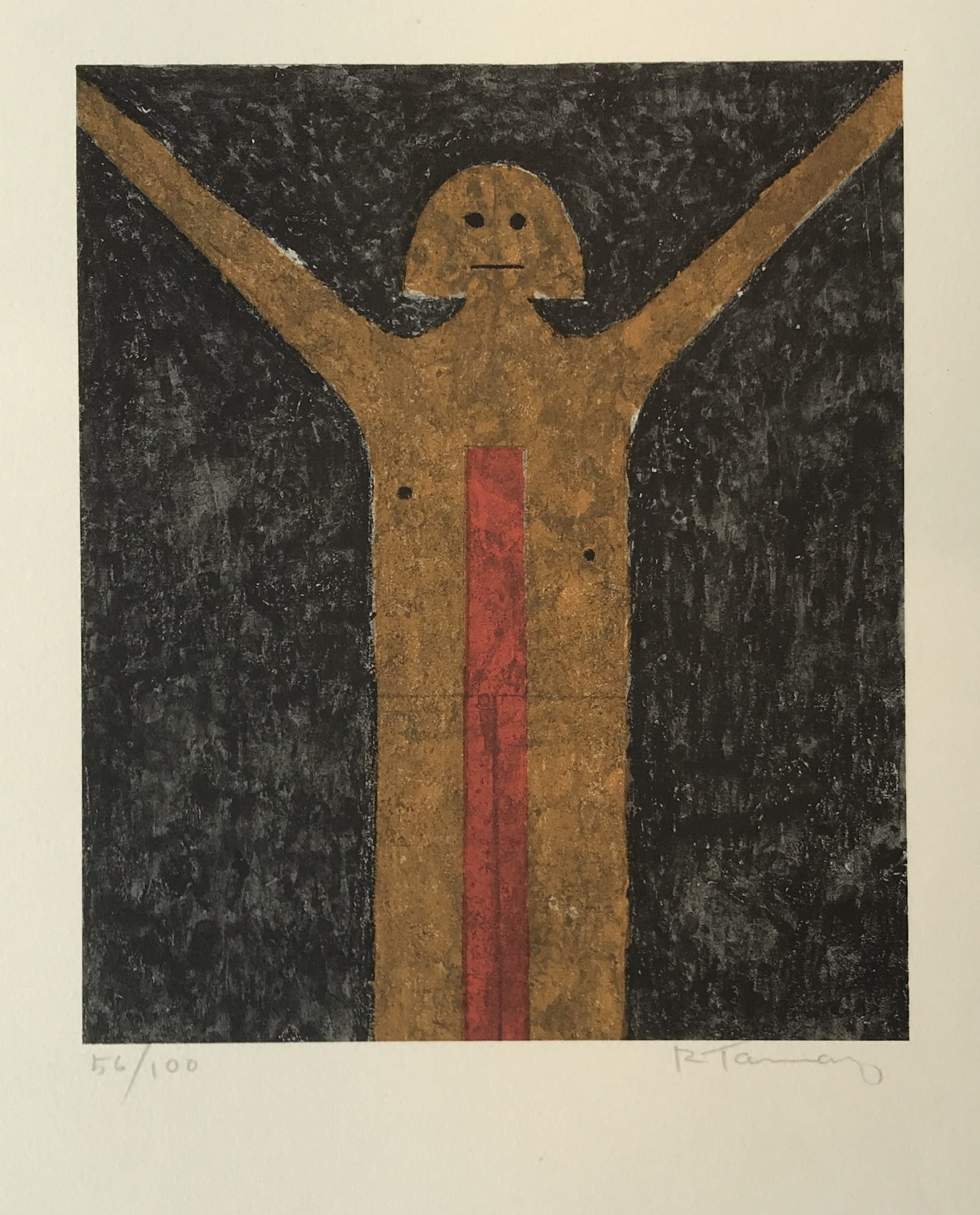Rufino Tamayo Niña
Rufino Tamayo Niña is an original Mixographia on handmade paper. This print is from the signed and numbered edition of 100, signed in crayon. Printed by Taller de Grafica Mexicana, Mexico. Rufino Tamayo’s legacy to the history of art is truly found in Tamayo’s oeuvre of original graphic prints. Rufino Tamayo expanded the technical and aesthetic possibilities of printmaking by developing a new genre of multiples, which was named Mixografia. Pereda 288.
Rufino Tamayo was a Mexican painter and printmaker known for his large-scale murals and vivid use of color. Like Diego Rivera, David Alfaro Siqueiros, and Jose Clemente Orozco, Tamayo helped garner international attention for Mexican art. Influenced by his pre-Columbian heritage as well as Cubism and Surrealism, Tamayo portrayed vernacular subjects like watermelons and animals in a unique formal vocabulary. “Art is a means of expression that must be understood by everybody, everywhere,” he stated. “It grows out of the earth, the textures of our lives, and our experience.” Born on August 26, 1899 in Oaxaca, Mexico, Tamayo left the San Carlos Academy of Fine Arts after a year and began to teach himself. He moved to New York in the 1930s after having a falling out with the politically driven Rivera and Siqueiros in his home county. Eventually returning to Mexico in 1959, he founded the Museo Tamayo Arte Contemporáneo in Mexico City and the Museo Rufino Tamayo in his birthplace of Oaxaca during the early 1980s.
| Title | Niña |
|---|---|
| Alt. Title | Girl |
| Medium | Mixograph |
| Year | 1981 |
| Edition | 100 |
| Catalogue Raisonné | Pereda 288 |
| Signature | Signed |
| Size | 39.5 x 31 (in) 101 x 79 (cm) |
| Price | SOLD |
Description
Rufino Tamayo Niña is an original Mixographia on handmade paper. This print is from the signed and numbered edition of 100, signed in crayon. Printed by Taller de Grafica Mexicana, Mexico. Rufino Tamayo’s legacy to the history of art is truly found in Tamayo’s oeuvre of original graphic prints. Rufino Tamayo expanded the technical and aesthetic possibilities of printmaking by developing a new genre of multiples, which was named Mixografia.
Rufino Tamayo Niña
Rufino Tamayo was a Mexican painter and printmaker known for his large-scale murals and vivid use of color. Like Diego Rivera, David Alfaro Siqueiros, and Jose Clemente Orozco, Tamayo helped garner international attention for Mexican art. Influenced by his pre-Columbian heritage as well as Cubism and Surrealism, Tamayo portrayed vernacular subjects like watermelons and animals in a unique formal vocabulary.
Rufino Tamayo Niña
“Art is a means of expression that must be understood by everybody, everywhere,” he stated. “It grows out of the earth, the textures of our lives, and our experience.” Born on August 26, 1899 in Oaxaca, Mexico, Tamayo left the San Carlos Academy of Fine Arts after a year and began to teach himself. He moved to New York in the 1930s after having a falling out with the politically driven Rivera and Siqueiros in his home county. Eventually returning to Mexico in 1959, he founded the Museo Tamayo Arte Contemporáneo in Mexico City and the Museo Rufino Tamayo in his birthplace of Oaxaca during the early 1980s.
Rufino Tamayo Niña
The artist continued to produce some of his most compelling works including Moon and Sun (1990) right up until his death on June 24, 1991 in Mexico City, Mexico at the age of 91. Today, his works are held in the collections of The Museum of Modern Art in New York, the Art Institute of Chicago, and the Walker Art Center in Minneapolis, among others.
Rufino Tamayo Niña
Additional information
| Title | Niña |
|---|---|
| Alt. Title | Girl |
| Medium | Mixograph |
| Year | 1981 |
| Edition | 100 |
| Catalogue Raisonné | Pereda 288 |
| Signature | Signed |
| Size | 39.5 x 31 (in) 101 x 79 (cm) |
| Price | SOLD |




